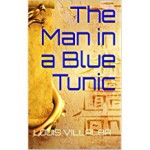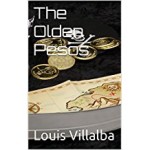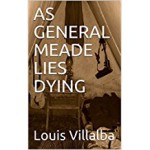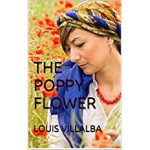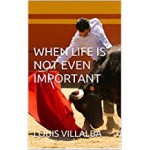INTRODUCTION TO “THE SILVER TEACUP.”
Me llamo Francisco, he said, interrupting what he was doing to offer his hand. A moment before, I’d reached the top of a tight spiral staircase and entered the bell tower of a small church. He was seated on a stool, wearing a green cardigan, a beret. His fingers were a blur, braiding what looked to be strands of wicker. I’d been on the road a week, traveling on my own: first Córdoba, then Sevilla, and now north of Cádiz in Arcos de la Frontera: the white-washed village a friend in Madrid insisted I see on my first trip south—in the summer of 1988.
In addition to hand-weaving baskets and hats, Don Francisco, a stocky and sturdy man in his seventies, was a weaver of tales: soccer feats, saints, local bullfighters, Lorca, the Spanish Civil War… My new friend, in fact, had been coerced to fight both for and against the Spanish Republic. But throughout the afternoon I spent with him, he betrayed no strong political allegiance or ideology, except to express how much he loved his native city, Cádiz—which brings me to the matter at hand.
Louis Villalba has achieved in Silver Teacup what I’ll call generous and sprawling “love poems” to Don Francisco’s hometown. In the best of these I find myself transported—not only to the narrow streets, plazas, and seaside promenades I wandered with pleasure before boarding my bus to Arcos, but also shuttled back in time… For history, both contemporary and ancient, feels like the bedrock underlying these pages, pages that sing this port city in Andalucía.
Emblematic of this is “Poppy Flower.” On one level, we’re treated to a ghost story; on another, a singular tale of love. But it’s also a lesson or reminder of how the Spanish inquisition played out in Cádiz, persecuting conversos—Jews who converted to Catholicism to avoid expulsion in 1492. The vivid fragments presented here of dubious church history are as compelling as the focal narrative thread.
In another example, “The Man in the Blue Tunic,” we’re introduced to “Plinio,” time traveler who refers to Cádiz by its Roman name, Gades, and describes its ancient splendor to such a degree that he inflames the imagination of “Pepe,” contemporary inhabitant who has befriended him: “The bustle of the ancient forum came alive: the men wearing togas plain or with purple stripes, the slaves with their short tunic helping them through, the women with their long dresses and their veils—married with stoles and single without—some of their attendants holding parasols to protect them from the oppressiveness of the sweltering sun …”
And one gathers that Villalba, himself a native of Cádiz, may have a primary source for a third example, “The Ruby Ring,” which is the story of a ring passed down from uncle to nephew. But it is also a parable about deep family ties, and how those ties can evolve, fade, or even fray over the passage of time.
Although comparisons can be a double-edged sword, I couldn’t help but think of Tales from the Alhambra as I navigated these “Tales from Cádiz.” Both use history to accentuate their stories, but neither is meant to be read as history. Like Irving, Villalba deploys good old-fashioned storytelling. And I use that term (“old fashioned”) in a good sense: writing that relishes and delights in painting pictures with words—with contagious engagement, narrative skill. The author’s attention and dedication to his craft is evident.
—Francisco Aragón
Institute for Latino Studies
University of Notre Dame
From the Author
“The Silver Teacup” was written as a “piropo,” a loving compliment to my hometown. Its name, “The Silver Teacup” is the moniker of Cadiz in the Hispanic world. Its beauty and joy dazzle its visitors. The stories in the book occur in our contemporary society, but always go back and revisit its glorious past, reviving the ancient history that continues to inspire us every day. One of my readers in the US traveled to Cadiz and stayed in a small hotel in the old downtown. She fell love with the city. She explained how every narrow street, cozy plaza, and seaside promenade made her relive the stories in my book.













